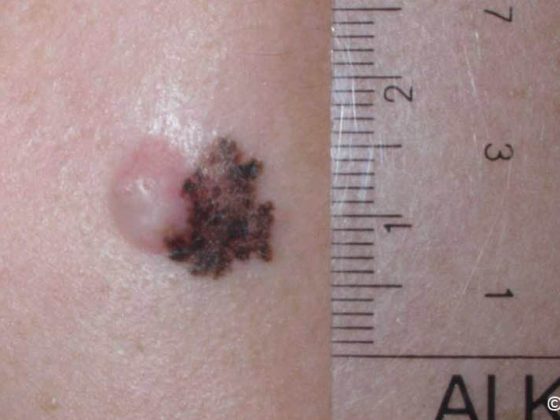On April 16, 2015, the annual symposium of the Swiss Society for Anxiety Disorders and Depression (SGAD) took place for the sixth time. The connections between depression and organic diseases of the endocrine system, intestine and heart were discussed. Another program item consisted of eating disorders in children and adolescents.
At the start of the symposium, former Federal President Moritz Leuenberger gave an entertaining and enriching speech on the points of contact between politics and psychiatry. He had personally witnessed the closure of psychiatric clinics in Italy in the 1970s and the impoverishment of drug addicts on Platzspitz and Lettenareal in Zurich in the 1990s.
Psyche and hormones
Prof. Dr. rer. nat. Martin Keck, MD, Director Clinic for Psychiatry, Psychosomatics and Neurology, Max Planck Institute, Munich, presented the interactions between psyche and hormones. The interdependencies are very diverse, and hormonal causes must always be excluded in the diagnosis of mental illness. As an example, the speaker mentioned Cushing’s disease, which is often accompanied by psychological symptoms such as depression and anxiety. Even when adequate therapy has restored hormones to normal regulation, neuropsychiatric symptoms may persist for a long time. Pituitary insufficiency with corresponding psychological symptoms following traumatic brain injury is also more common than one might think.
Stress can also trigger depression, but only if there is a corresponding vulnerability. Genetic predisposition influences stress regulation: if cortisol binding is less possible than in other people, there is increased vulnerability via reduced negative feedback. However, the gene that causes insufficient binding of cortisol does not simply determine fate, but only increases the risk of depression when unfavorable environmental influences are added.
Typical stress responses of the body include gluconeogenesis, lipolysis, immune suppression and anti-inflammatory effects, but also anxiety and depression. Accordingly, during remission of depression – usually before clinical improvement – the activity of the hypothalamic-pituitary-adrenocortical axis also normalizes, which can be detected by the Dex-CRH test. Failure to normalize on the Dex-CRH test increases the likelihood of depression recurrence (43% recurrence within 6 months vs. 8%), thus the Dex-CRH test is a useful biomarker. Prof. Keck advocated viewing depression as a systemic disease because depression has clinical sequelae such as dementia, metabolic syndrome, cardiovascular disease, stroke, osteoporosis, dyslipidemia, hypertension, etc.
Psyche and intestine
The fact that emotions and intestinal activity are closely linked is already shown by colloquial expressions such as “butterflies in the stomach” or “that beats my stomach,” said Prof. Christoph Beglinger, M.D., Senior Physician Gastroenterology and Hepatology, University Hospital Basel. Even commonly known phenomena, such as the bad mood when hungry or that chocolate helps against lovesickness, speaks for diverse gut-brain connections. Recently, the microbiome, or intestinal contents, has been viewed as an organ in its own right with various functions. Established functions of the microbiome are gastointestinal motility, digestive function and metabolism, regulation of the intestinal immune system, displacement of pathogenic germs, etc. Metabolic function is demonstrated, among other things, by the fact that insulin sensitivity improves in obese individuals who are transferred the stool of normal weight individuals. Dysbiosis of the microbiome can alter bodily functions; for example, it has been postulated to be associated with diabetes, gastrointestinal diseases, liver disease, or obesity.
At birth, the gastrointestinal tract is still sterile, but in a one-year-old child, the microbiome can already be compared to that of an adult. Around 1800 genera and 40,000 species of bacteria can be detected, especially in the colon. In the stomach, gastric acid prevents colonization, and in the small intestine, pancreatic juice prevents colonization. The microbiome profile is individual for each person. Recent studies indicate that intestinal cells also have taste receptors and that feedback to the CNS occurs from the gut. “The diet we eat also controls our hunger and cravings,” Prof. Beglinger said. “Unpublished data show that fructose does not activate the reward system in the brain, unlike glucose.” However, it is unclear whether probiotics can have a positive effect on bodily functions, because at the moment it is not known which strains should be taken, when and in what dosage. The speaker was also skeptical about Lactobacillus preparations: “With these preparations, living Lactobacilli hardly reach the intestine. Most bacteria are already killed in the refrigerator if the preparation is left for a few days, and those that remain are eliminated in the stomach by gastric acid.”
The psyche is also influenced by the microbiome. Thus, mice whose gut is germ-free have reduced anxiety behavior. Late colonization of the intestine in the adult animal does not allow this behavior to be corrected. This suggests that a change in the microbiome (e.g., due to gastroenteritis or antibiotic therapy) also alters sensations. The research field of microbiome is very current and there are still many questions that need to be answered: How important is the microbiome for brain function in adults? What role does gender play? How does the microbiome influence CNS development?
Psyche and heart
Prof. Martin Preisig, MD, Chief Physician, Center for Psychiatric Epidemiology and Psychopathology, CHUV, Lausanne, explained the interplay between depression and heart disease. Here, too, the language already shows the close connection between psyche and circulation: “My heart is light/heavy,” “We are one heart and one soul,” or “My heart is breaking. However, the association is not easily established in studies because of limitations in most studies on depression and heart disease (clinical studies without control groups, few prospective data, depression often determined by depression scales rather than history, somatic findings often collected by questionnaires rather than examinations).
Nevertheless, 16-23% of all cardiac patients can be expected to have depression, and depression scales sometimes predict prognosis better than cardiac parameters (myocardial infarction patients with depression have an increased mortality by a factor of 2). But do the scales really measure the presence of depression or do they simply indicate a severe physical illness with a corresponding mental state? Conversely, depressed patients have a 2.54-fold increased risk of myocardial infarction, and eight of 12 studies showed increased cardiac mortality in depressed patients.
Some potential mechanisms for this mutual influence are discussed: There could be a causal relationship between the two diseases, or third-party factors (common risk factors) could favor both equally (e.g., diet, poverty, drugs, environmental factors, genetics, immune system, etc.). Possible biological mechanisms include inflammatory diathesis, genetics, neurohumoral dysregulation (cortisol), autonomic nervous system dysregulation (increased catecholamines), endothelial dysfunction, etc. Depression can also trigger behavioral changes (smoking, inactivity, overeating, decreased compliance) that promote heart disease, and Conversely, heart disease with its associated feelings of loss (health, sexuality, independence, job, financial security) can trigger depression. However, intervention studies in depressed patients after myocardial infarction treated with antidepressants or behavioral therapy show no significant effect on cardiac mobidity, mortality, or rehospitalizations.
The PsyCoLaus study, conducted in Lausanne, investigated the links between mental and cardiovascular diseases. Individuals with atypical depression were found to be more affected by obesity, diabetes, or metabolic syndrome and to have more inflammatory parameters. The increase in inflammatory parameters is probably due to weight gain. These associations could not be demonstrated in patients with melancholic depression. At five-year follow-up, atypical depressives had a nearly fourfold increased risk of obesity. Among individuals who were depressed at baseline, the risk of mortality after five years was three times higher than among individuals without depression.
Eating disorders in children and adolescents
Dagmar Pauli, M.D., Chief Physician, Child and Adolescent Psychiatric Service, Zurich, provided information on eating disorders in adolescent patients. Subclinically, there are different types of disordered eating behaviors. In “emotional eating,” negative feelings are diminished through food. In the process, sufferers consume mainly sweet foods, which can lead to the typical “kummerspeck”. In “chastened eaters,” eating is subject to constant cognitive control in order to reduce food intake; more food is then eaten in response to stress, negative emotions, or distraction because cognitive control is removed. In contrast, food intake tends to be lowered in non-restrained eaters who experience stress. Restrained eating behaviors form a foundation for obesity, binge eating, and bulimia.
Typical personality traits in patients with eating disorders include anxiety (social phobia), depressiveness, perfectionism, rigidity, obsessiveness, shame, “emotional dustiness,” and deficits in emotional regulation and impulse control. The longer the disease progresses, the more pronounced these characteristics are; therefore, adolescents have an even lower rate of mental health comorbidities than adults. A history of obsessive-compulsive or anxiety disorder worsens the prognosis for eating disorders. “However, depression in an adolescent with eating disorders can simply be a sign of malnutrition,” the speaker said. “When weight increases in these patients, the depression disappears.” Psychopharmacotherapy for anorexia is usually ineffective: antipsychotics are clinically effective in individual patients with obsessive thoughts and severe anxiety, but have no effect on weight gain. Antidepressants do not address the underweight or improve the accompanying depression; they may reduce the frequency of binge eating in bulimia, but usually only temporarily.
Early diagnosis and treatment of eating disorders improves prognosis. It is important for family physicians and pediatricians to know that it is not the absolute body weight that is critical, but the percentile progression, which is typically steep in anorexia. “Anorexia can be fully developed when body weight is still normal,” Dr. Pauli cautioned. Dieting in adolescence is a risk behavior for eating disorders!
The primary focus of treatment is to stabilize eating behavior and weight with the involvement of the family; therapy of the background of the eating disorder only takes place later in the course. It is important to motivate adolescent patients for treatment, because many sufferers lack motivation. In most cases, outpatient treatment is possible.
Source: 6th Annual Meeting of the Swiss Society for Anxiety and Depression (SGAD), April 16, 2015, Zurich.
InFo NEUROLOGY & PSYCHIATRY 2015; 13(3): 25-27.











